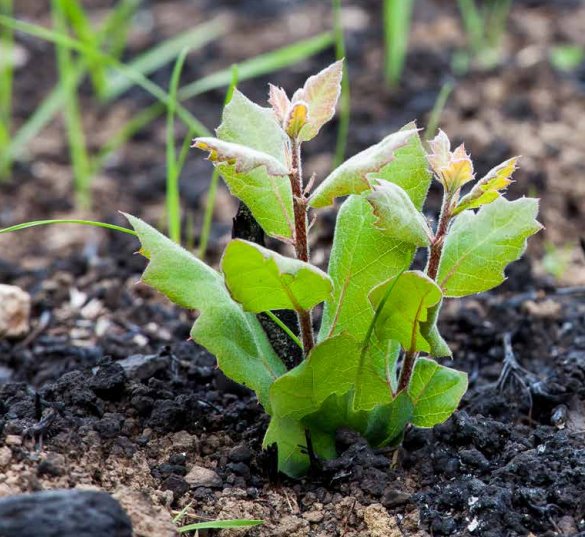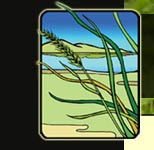Restoring the Landscape After the Fire
Article by Josh Fodor
After every fire I receive inquiries from homeowners and landscape managers, anxious to know what needs to be done immediately after a fire to help the landscape recover.
My advice is: don't overreact. Native plants will take care of themselves. There's enough for you to do after a fire without adding unnecessary tasks. That said, there are some specific steps you should take.
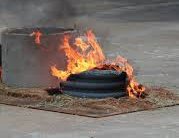
Assess infrastructure and erosion risks. Drainage infrastructure is often damaged or destroyed in a fire. Culverts under driveways and roads may be crushed by fire fighting equipment or in the case of plastic culverts, completely melted. Inspect your drainage systems carefully and make a plan for increased runoff that will occur during the rains. Rich Casale's 10 Rules for Preparing for Winter after the Fire recommends the 4-D formula to prepare for drainage and runoff: 1) Decrease volumes and/or velocity of runoff, 2) Detain runoff, 3) Dissipate runoff and 4) Divert runoff. Seek professional guidance from an engineer or certified erosion control specialist to evaluate your drainage area and make recommendations for temporary and permanent repairs.
Plan ahead to remove invasive plants after the first rains. Many invasives, such as French broom, love fires. Plan ahead for the flush of growth that occurs when it rains so you can remove the invasives and let the natives reclaim the landscape. A botanist can help you identify invasive species or plan how to handle the rains.
Don't contaminate burnt areas with seeds. Purchased erosion control seed mixes, even California native mixes, will not be native to your property, and it is almost always better if you take advantage of the native seeds that are indigenous to the unique history and microclimates of your property. Removing invasives, not adding more seeds, will give your native plants the greatest advantage. For critical areas (e.g. immediately above roads, culverts, or other infrastructure) that may have little to no native seed bank, seed with cereal barley (Hordeum vulgare) or similar non-native annual seed. Cereal barley germinates and grows rapidly, but will not reseed the following year and can significantly reduce surface erosion. The application rate is 200-400 lbs/acre (4-8 lbs/sf).
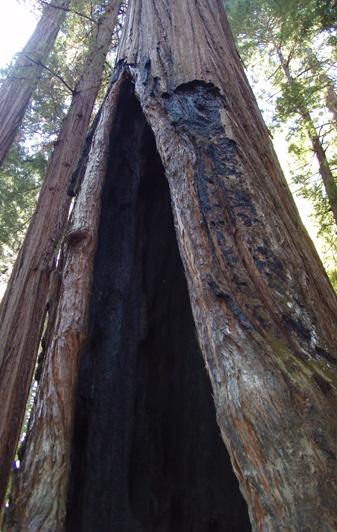
Credit: forestthreats.org
If you escaped this fire, prepare for the next. If your region hasn't burned recently, there will be more fuel on the ground. Minimize flammable debris and invasive fire-prone trees, and work with neighbors to reduce fire risk in your area (nfpa.org has some tips). Decades of research have established that prescribed burning is the most effective measure for long-term risk management (see Calkin 2014 and arb.ca.gov's prescribed burning map).
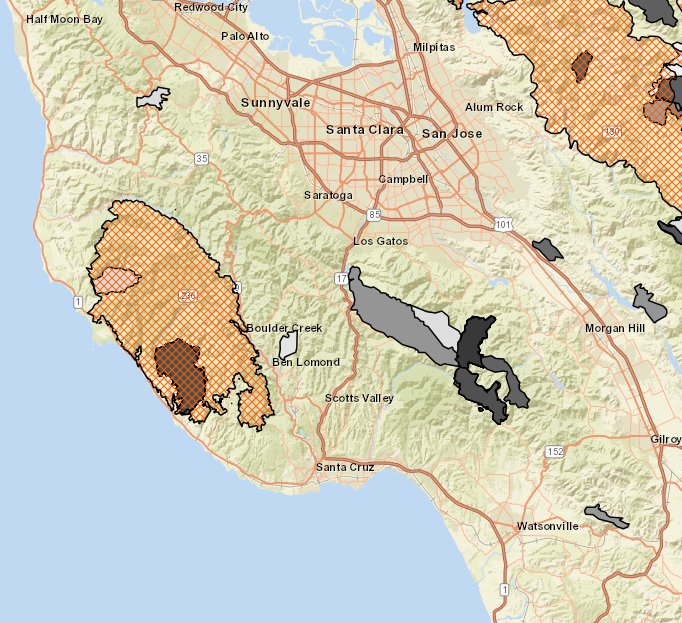
Orange areas are this year's perimeters.
Access this map directly at firemap.sdsc.edu (not mobile-friendly)
(In the upper-right layer controls, turn on Fires→Historical Fires, then look for the legend control to adjust dates.)
